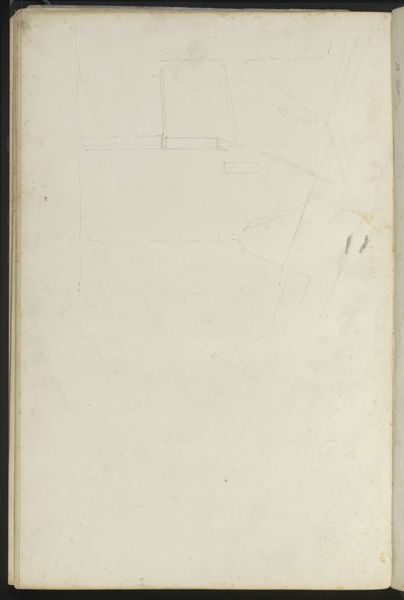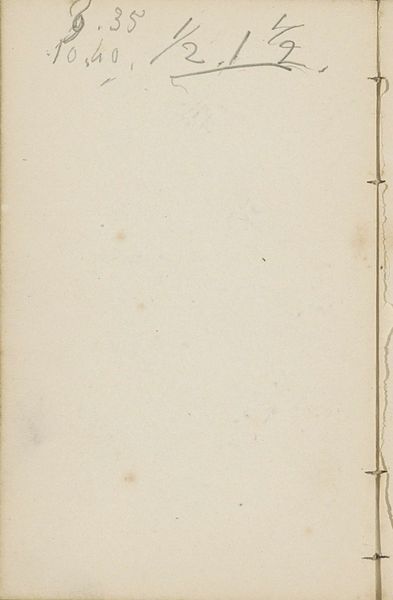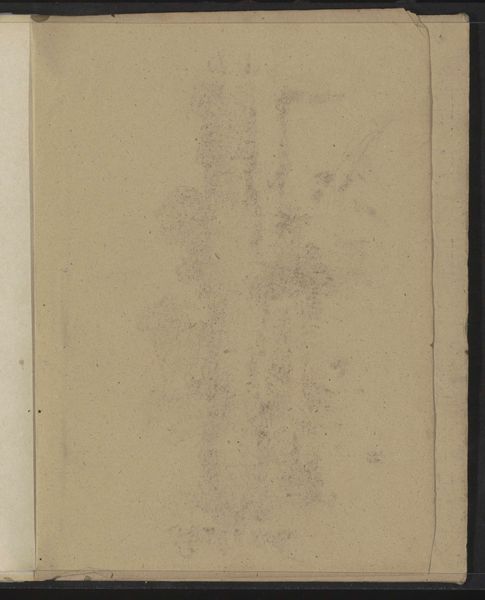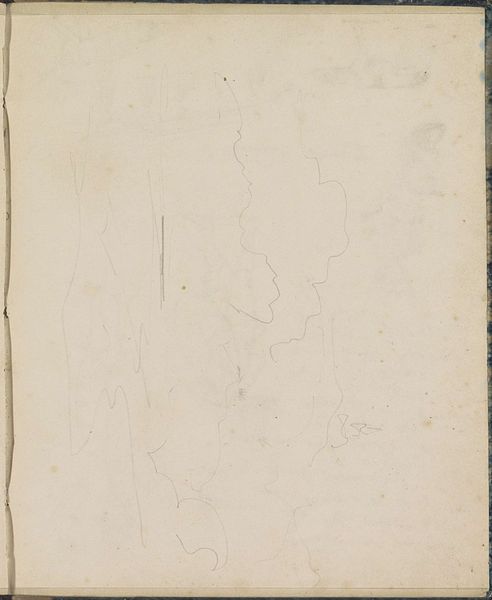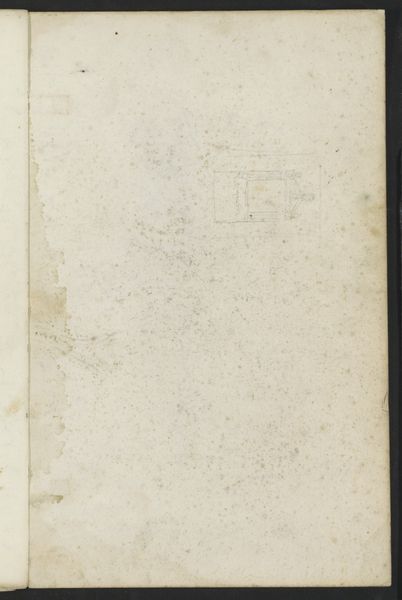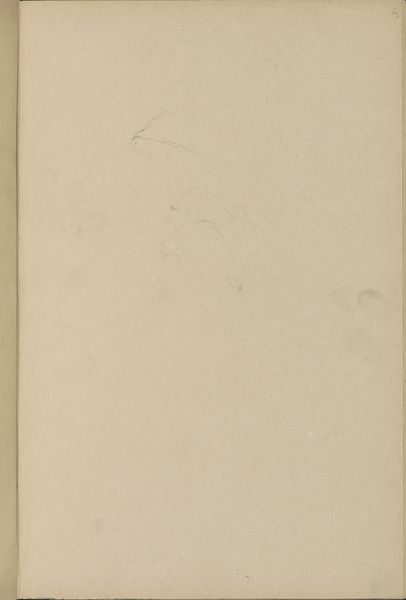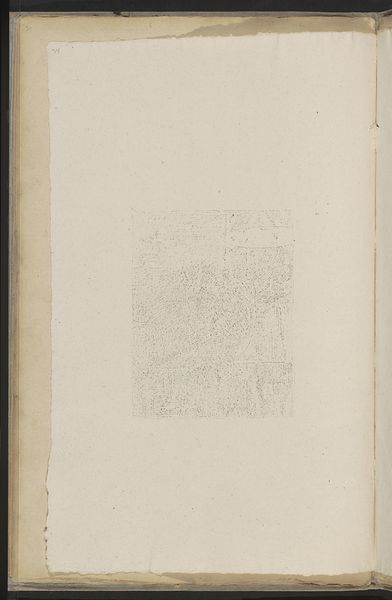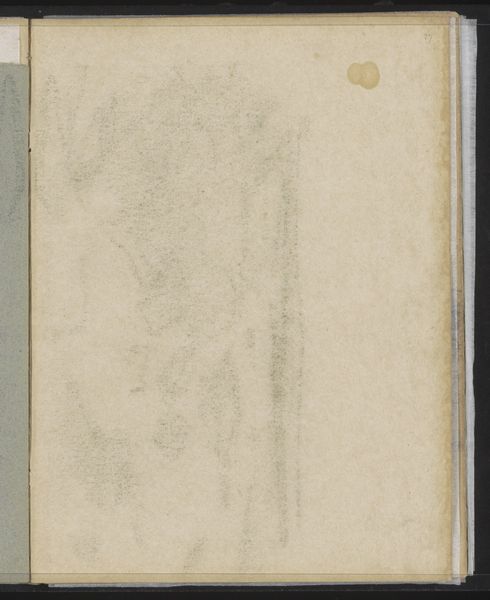
drawing, paper, pencil, architecture
#
drawing
#
paper
#
geometric
#
pencil
#
architecture
Copyright: Rijks Museum: Open Domain
Curator: Today we’re looking at Willem Koekkoek’s drawing, "Studie, mogelijk architectuur," which translates to "Study, possible architecture." It dates roughly between 1849 and 1895 and is held here at the Rijksmuseum. It’s a pencil drawing on paper. Editor: Stark. Bleak, even. The composition is dominated by what appears to be negative space. Are we sure something is actually *there*? Curator: Look closer. You see the faintest pencil lines? They delineate the skeletal framework of…something monumental, perhaps an archway or facade. There is more to the composition. Even these wisps of lines carry significant symbolic weight when it comes to Dutch identity and memory. Editor: Right, I see now. Very faint indeed. To me, this reads as less about "monumentality," more a process, the labor of draftsmanship laid bare. The tooth of the paper is very evident – you can practically *feel* the drag of the pencil. It really spotlights the act of creation itself. The cost involved, in time and skill, in envisioning something like this. Curator: But what did Koekkoek envision? Perhaps an idealized past? Think of the architectural styles he favored; the gothic revival that speaks to civic pride and a rooted cultural identity…this may be the bones of one such structure. Consider the historical weight carried by such representations, especially in a period defined by nation-building and historical self-fashioning. Editor: Nation-building on the backs of pencils and paper, so to speak. But speaking of that "historical self-fashioning," who are we building *for*, and from whose perspective? Was the goal historical accuracy, or something else? Also, from the look of the ragged edges, the paper seems quite roughly worked; Was paper this large readily available, or an expensive commodity, one sign of privileged access that we’re meant to disregard? I always try to understand art through its materials. Curator: These lines invite introspection about the grand narratives of architecture and the values embedded within them. A ghost of structure intended to resonate with our souls. Editor: Indeed, the skeletal form prompts us to dig deeper into both the art’s creation and history, wouldn't you agree? Curator: Precisely, and in seeking these connections we are now building new meanings too.
Comments
No comments
Be the first to comment and join the conversation on the ultimate creative platform.


